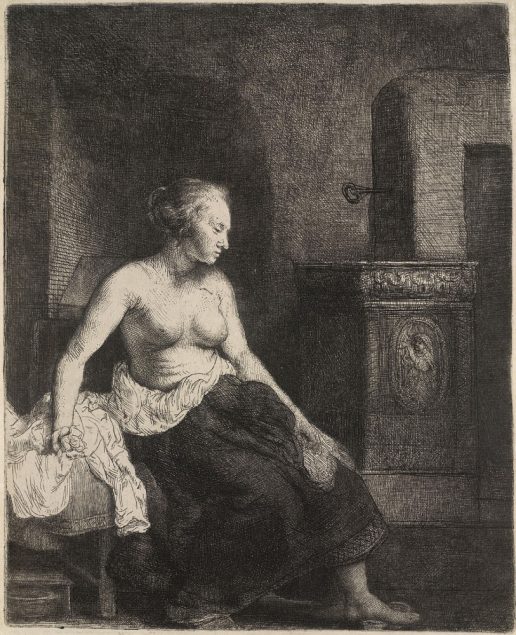Allen Memorial Art Museum, Oberlin College, Oberlin, Ohio
February 6–May 13, 2018
Rembrandt Harmensz. van Rijn (Dutch, 1606–1669), "Self-Portrait Leaning on a Stone Sill," showing Basilisk watermark, 1639. Etching, with touches of drypoint; retouched in black chalk. Collection of Yale University Art Gallery. Transmitted light photograph courtesy of Theresa Fairbanks-Harris.Organized in conjunction with Cornell University’s Herbert F. Johnson Museum of Art,
Lines of Inquiry: Learning from Rembrandt’s Etchings includes stellar impressions of Rembrandt’s etchings on loan from Cornell, Harvard, Princeton, Vassar, Syracuse, Yale, the University of Kansas, the Morgan Library & Museum, and private collections.

Christ Healing the Sick,
Oberlin
The exhibition is curated jointly by Oberlin’s Curator of European and American Art Andaleeb Badiee Banta and Andrew C. Weislogel, the Seymour R. Askin, Jr. ’47 Curator of Earlier European and American Art at Cornell.

Rembrandt Harmensz. van Rijn (Dutch, 1606–1669), Jan Six, 1647. Etching, engraving, and drypoint. Collection of the Frances Lehman Loeb Art Center, Vassar College.
The accompanying catalogue presents new research on initiatives that examine the enduring status of Rembrandt as a printmaker and the multivalent nature of his works. It includes an overview of the history of Rembrandt prints in American academic collections, a documented account of the Allen Memorial Art Museum's secret guardianship of the Morgan Library & Museum’s collection of Rembrandt etchings during World War II, and an introduction to Cornell University’s Watermark Identification in Rembrandt Etchings (WIRE) project, which is dedicated to digitally facilitating access to Rembrandt watermark scholarship.

Comments
Post a Comment